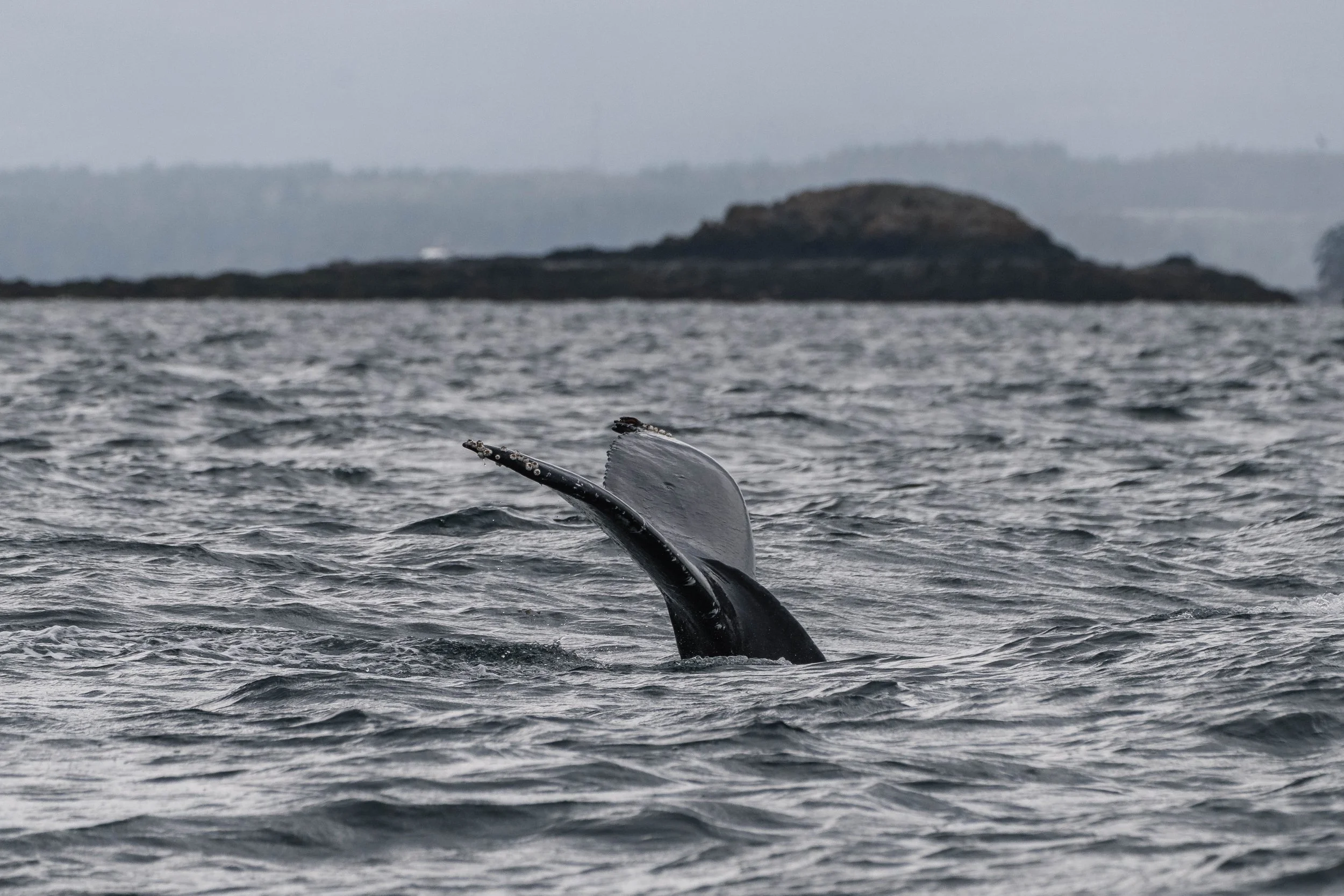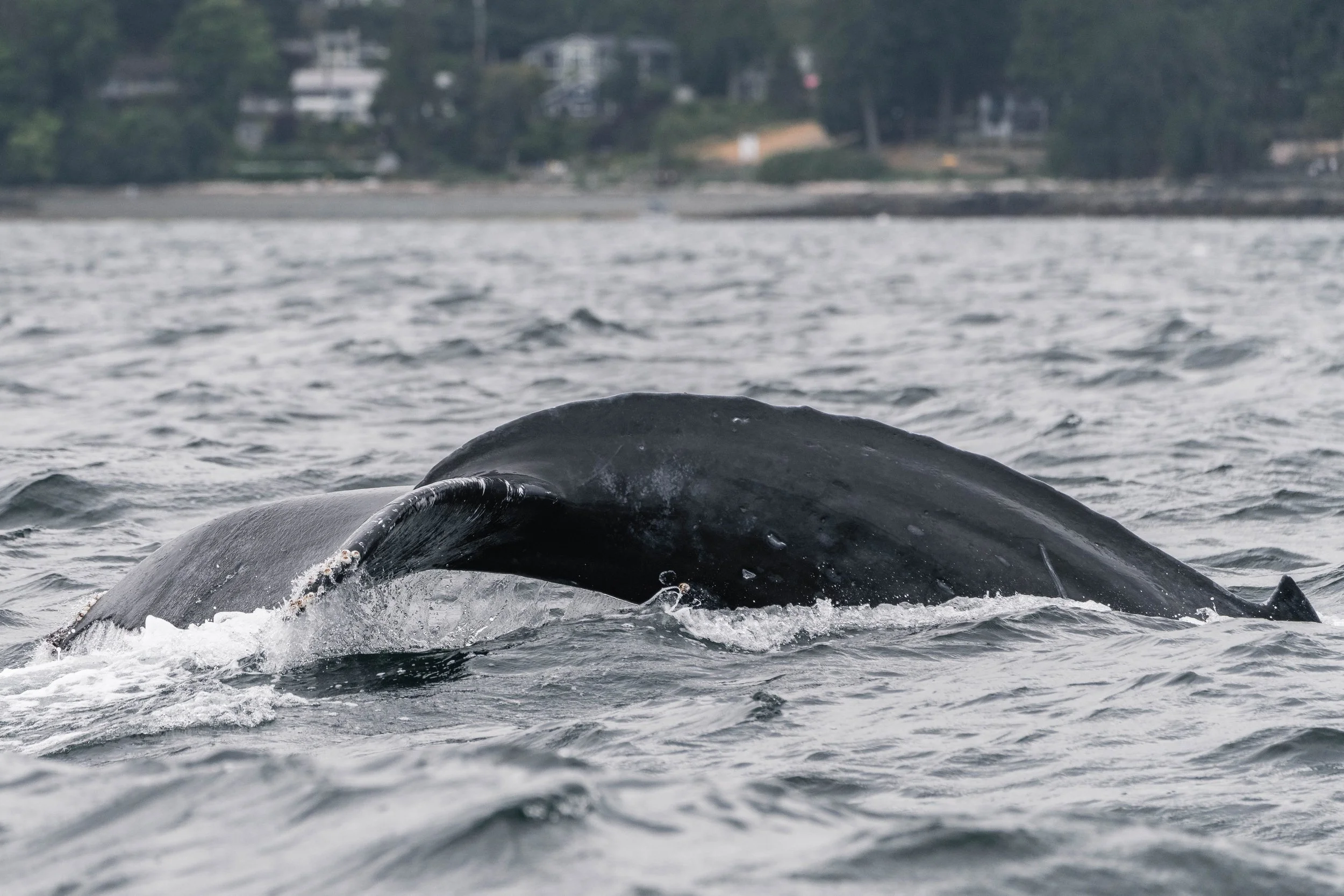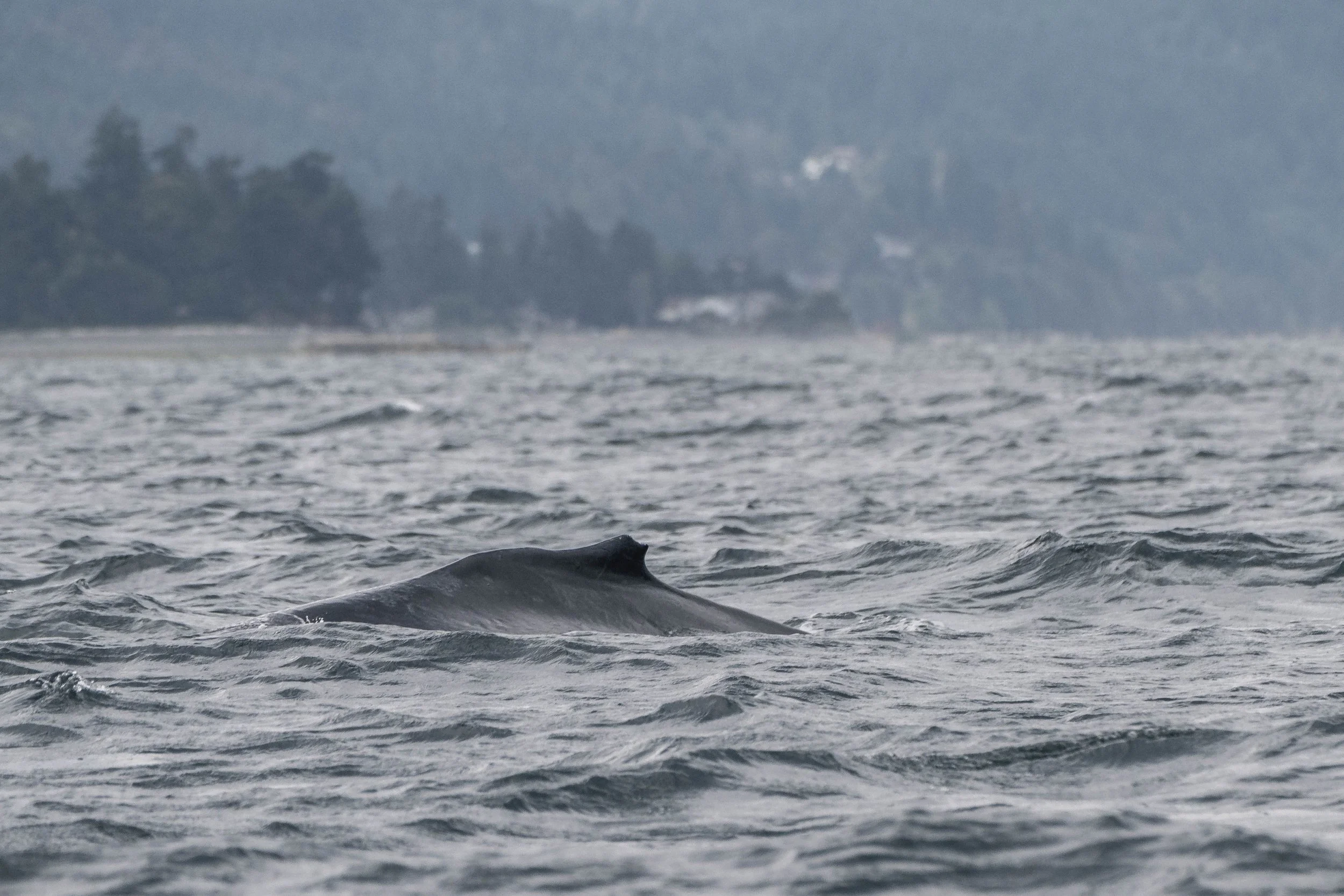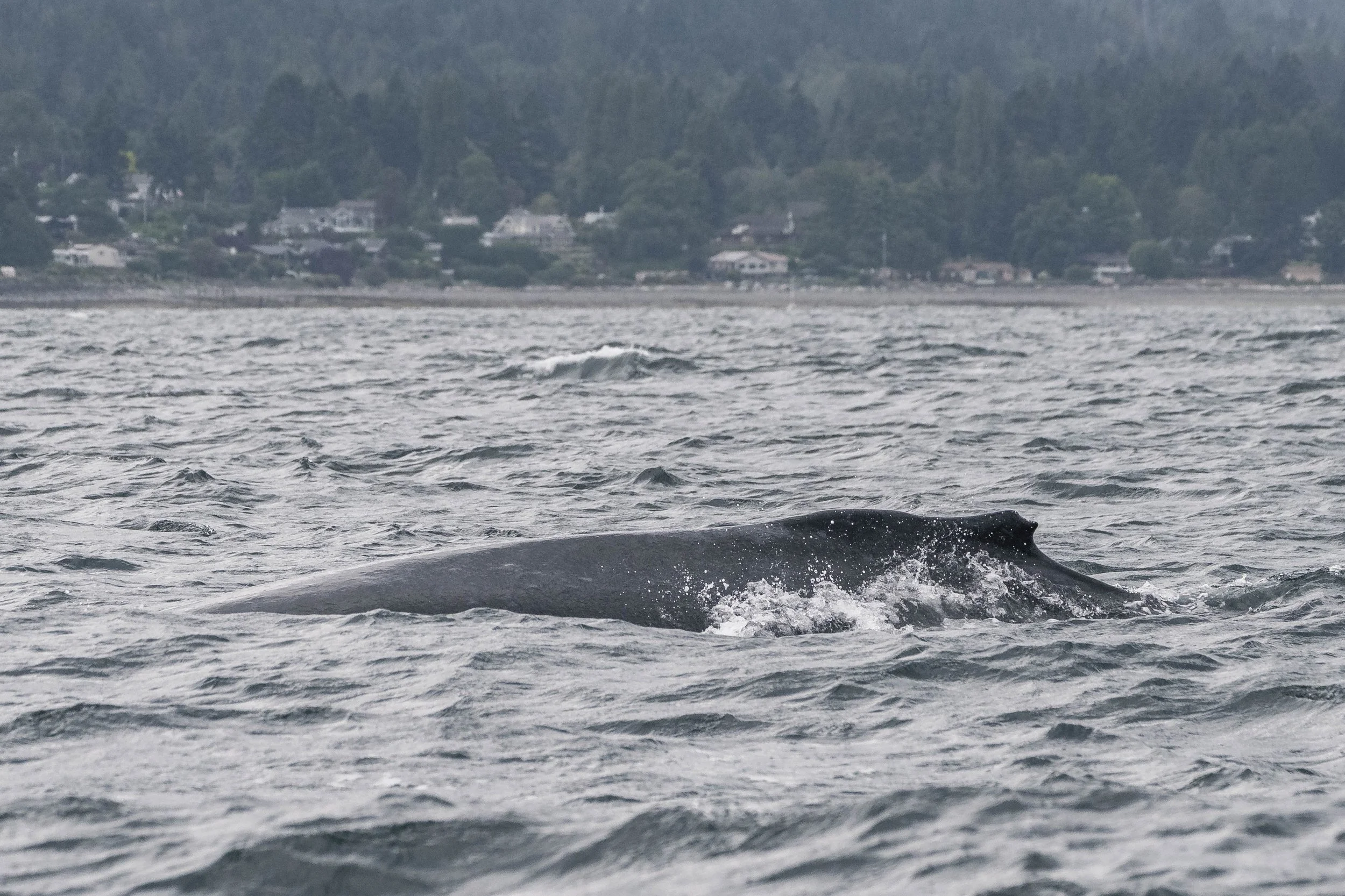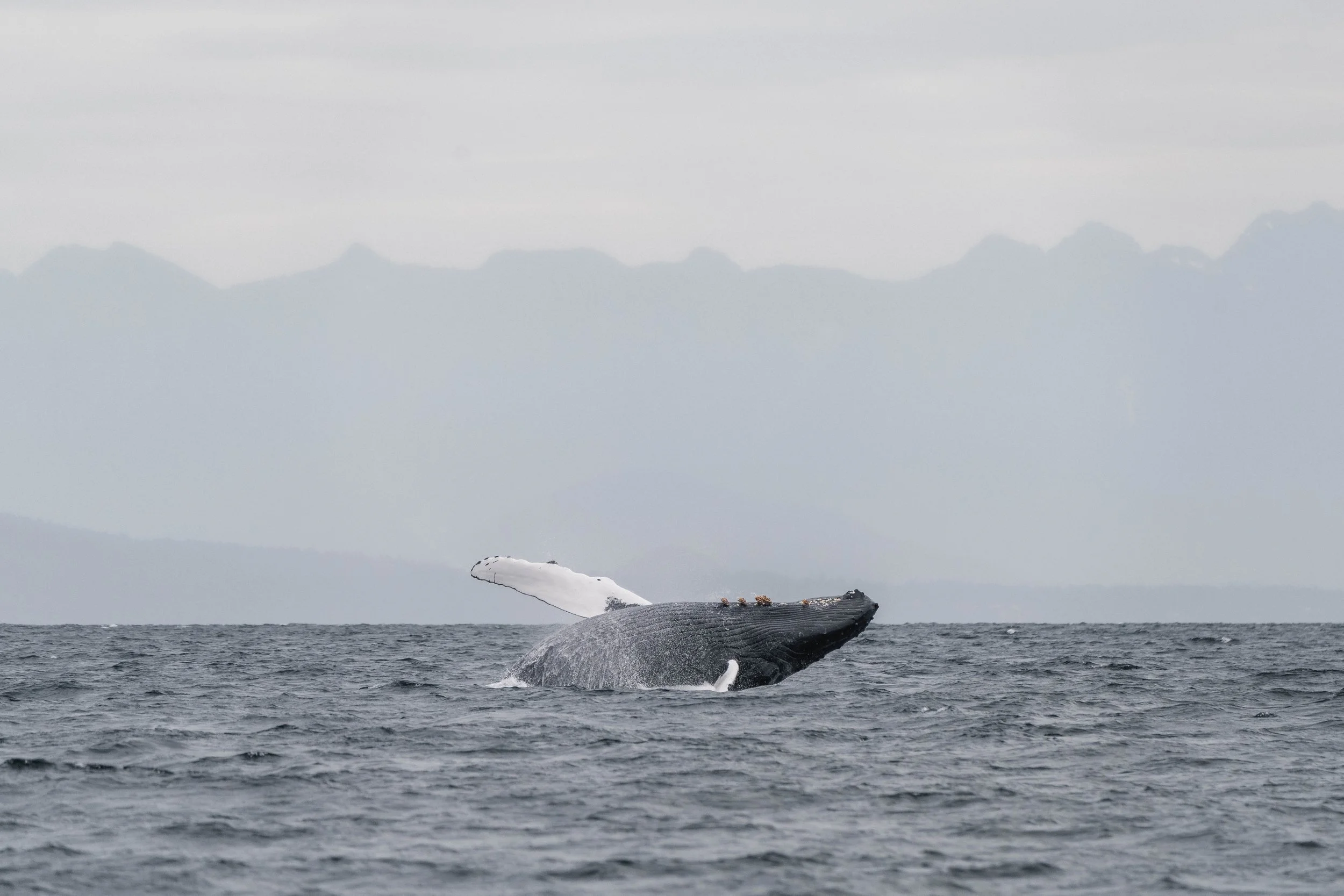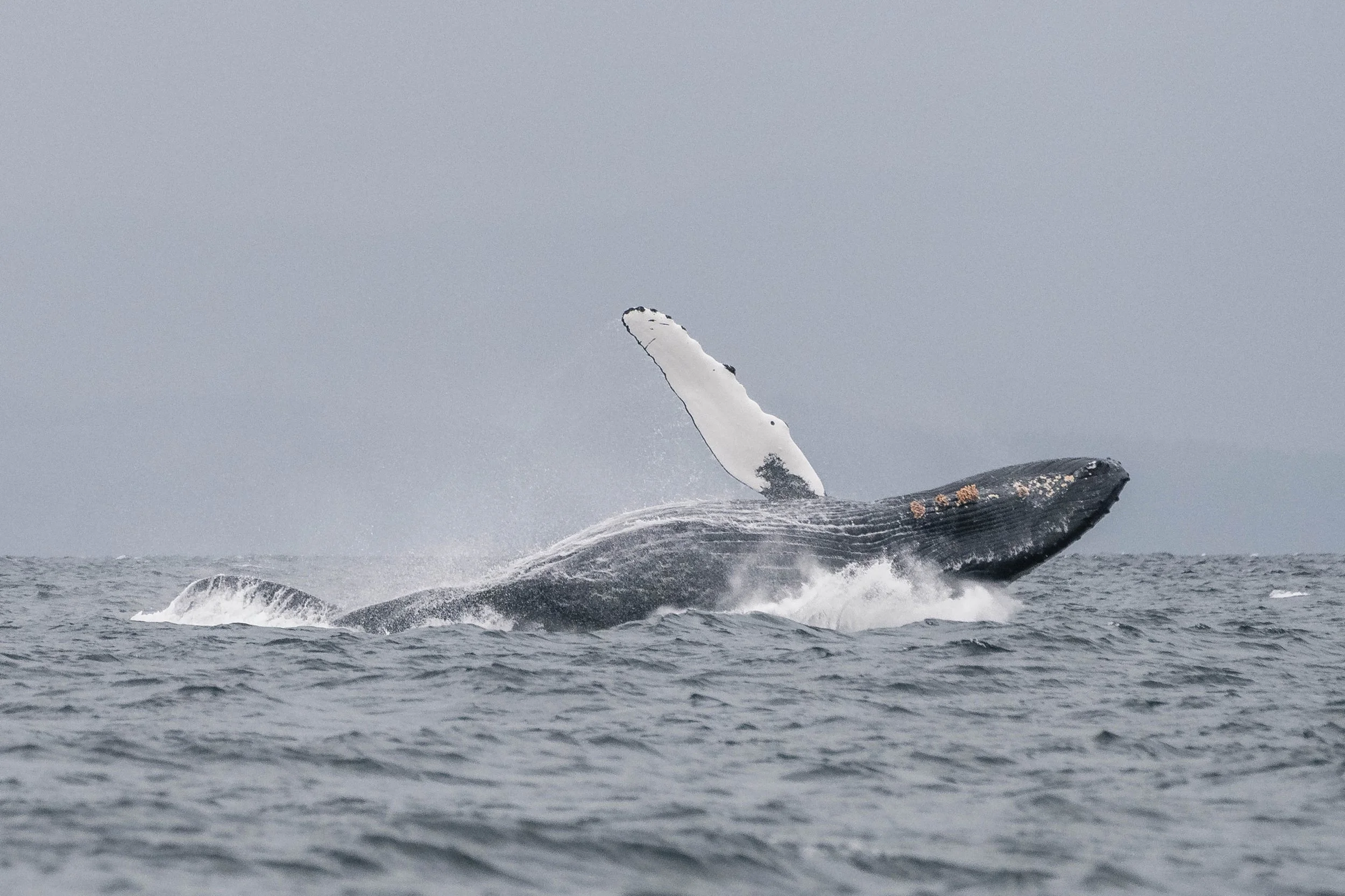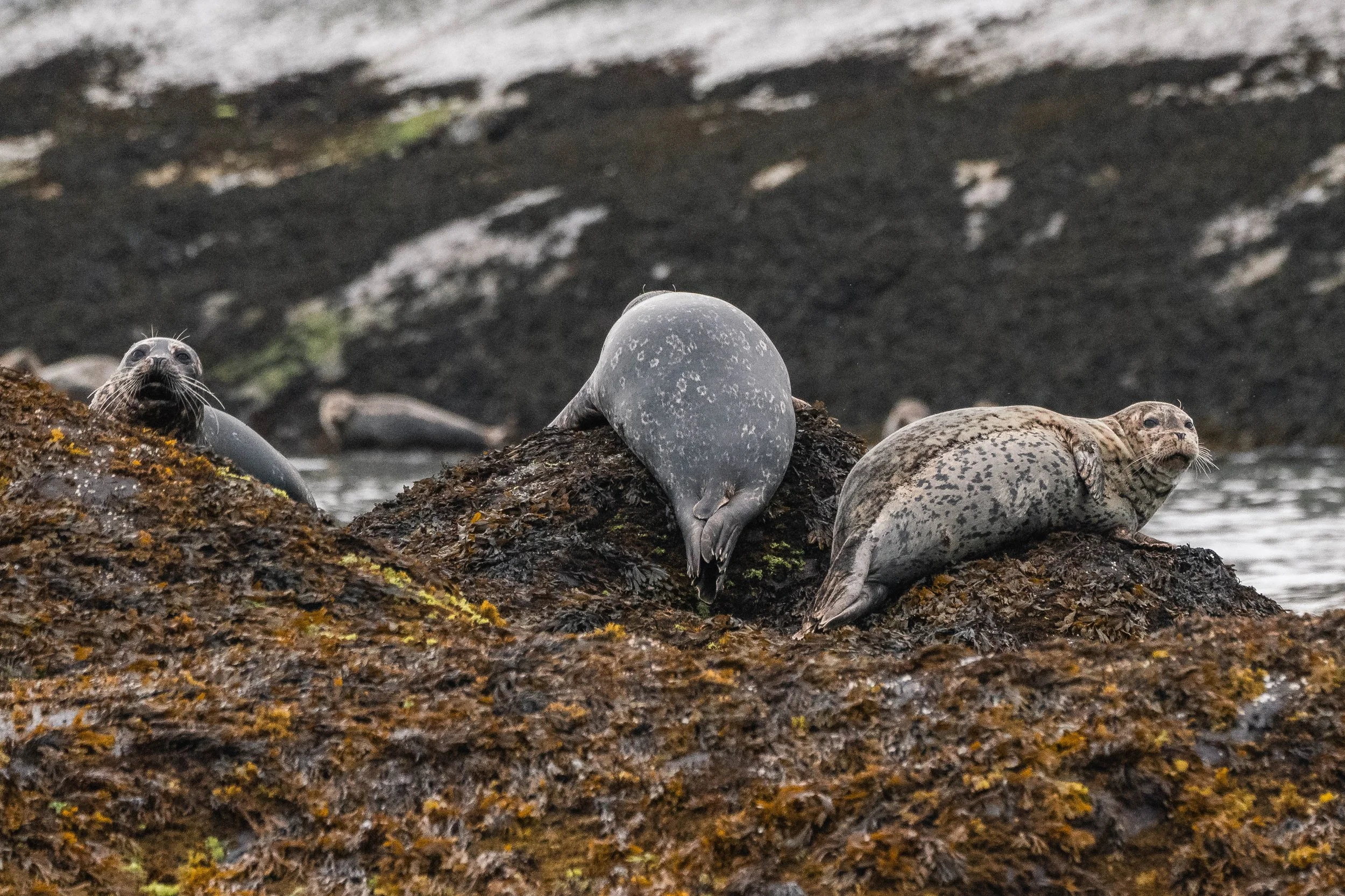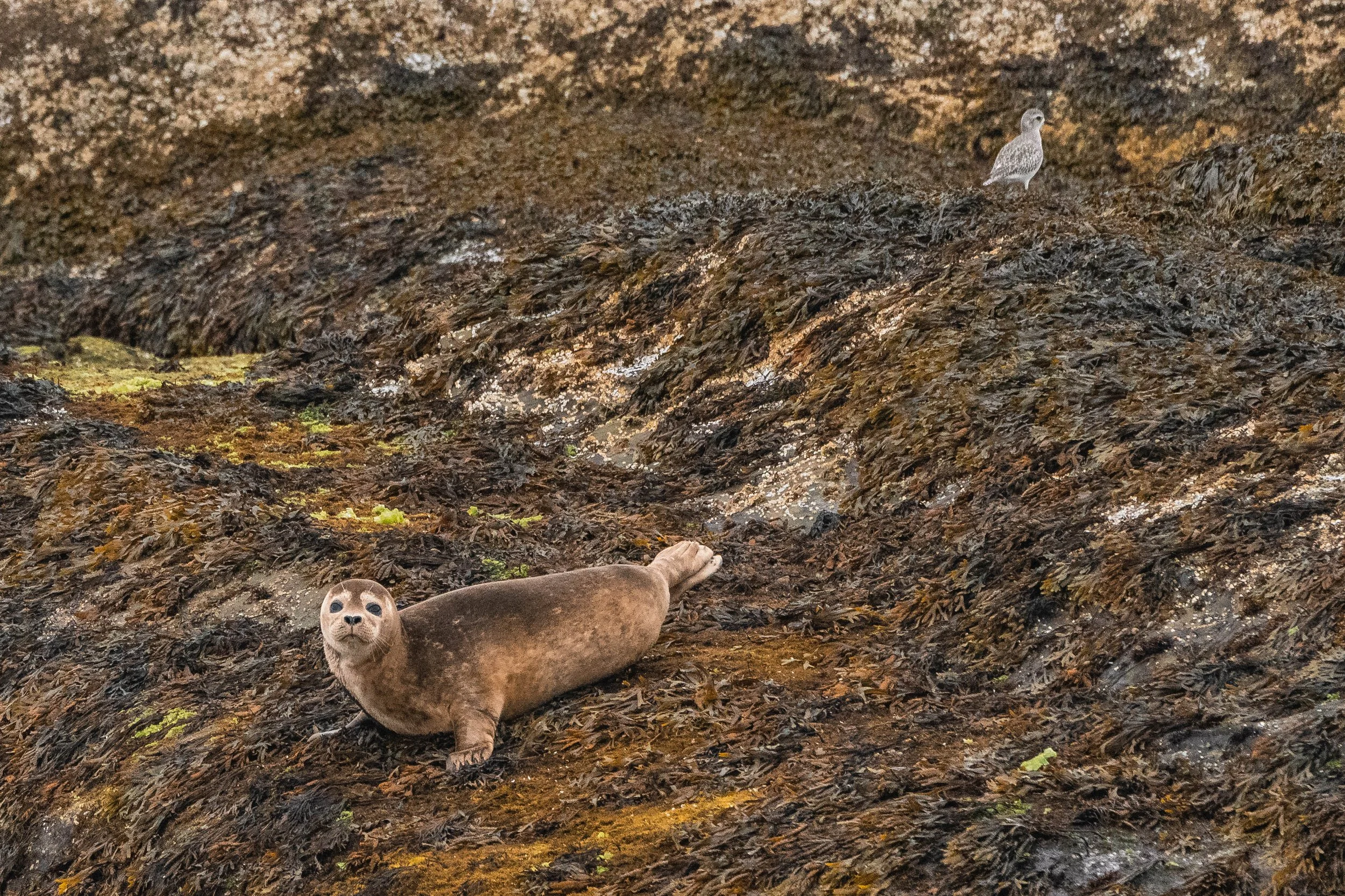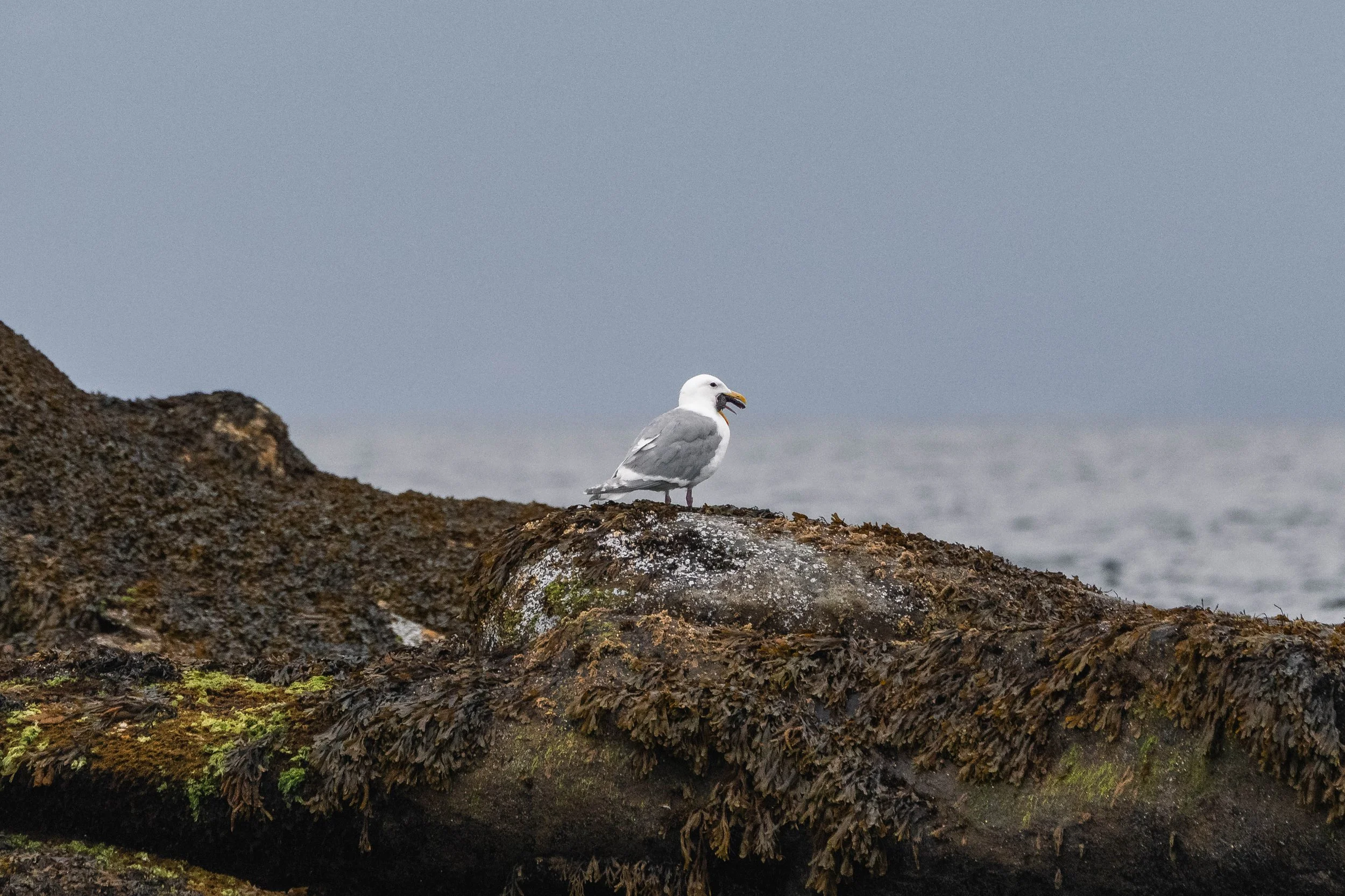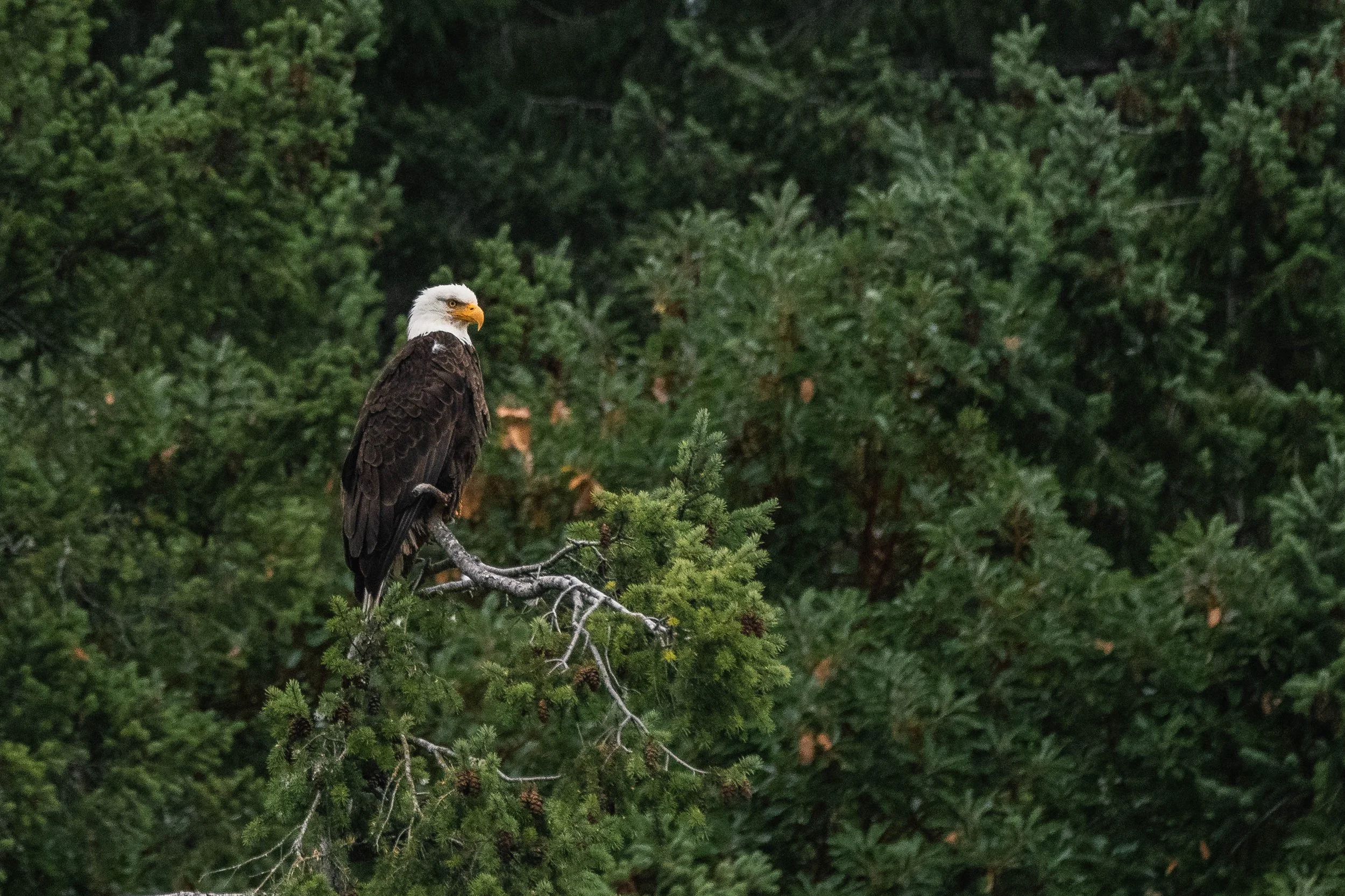July 8, 2025, 10:30 AM - A humpback trio on Tuesday!
We pushed off the dock on our open boat, Cascadia, with a light breeze to keep us cool, and set off into the Strait to begin our search. Luck must have been on our side! Within just 20 minutes and right around the corner from home, we spotted something dark among the waves. It was a humpback! We quickly snapped some photos for identification, but the tail wasn’t familiar. We had to consult the catalogues to try and match the fluke and dorsal fin. Eventually, we got a match: HW-MN0401531, a brand-new whale for our company! Very little is known about this individual, with only a single recorded sighting in 2024 in Alaska.
Humpback whales undertake one of the longest migrations of any marine mammal, travelling thousands of kilometres each year between their warm winter breeding grounds and cold summer feeding areas. After spending the winter months in tropical waters, such as Hawaii and Mexico, where they mate and give birth, humpbacks begin their long journey north. Their destination: the rich, nutrient-dense waters of the North Pacific, including around Alaska. But before reaching those northern feeding grounds, many make a critical stop along the way in the coastal waters of British Columbia.
The B.C. coast, especially the Salish Sea, offers an abundant buffet of schooling fish and other prey like krill and copepods. These nutrient-rich waters serve as an important transitional feeding area, particularly for mothers with young calves needing to rebuild their strength after months of fasting. For juveniles and newly independent whales, B.C. is also a crucial learning ground where they begin honing their foraging skills. The islands, inlets, and channels of the region provide shelter and food that help prepare them for the colder, more challenging waters further north.
Once in Alaska, humpbacks take full advantage of the massive blooms of plankton and fish, feeding almost non-stop to build up the fat reserves they’ll need for their next migration south. They spend the summer months in these northern feeding grounds, gorging on krill, herring, and other small prey. By fall, the cycle begins again, as they return to the tropics to breed, give birth, and rest in warmer waters. The entire migration is a remarkable feat of endurance—an ongoing journey balancing the needs of feeding, mating, and raising young across vast stretches of ocean. After spending some time with our new friend, we decided to follow in its flukeprints and continue north—just like our Alaska-bound humpback!
Near the shoreline by Pipers Lagoon, we spotted a couple more blows and found ourselves in the company of two familiar whales: Barracuda (BCY0649) and Anvil (BCZ0410). Pipers Lagoon, located in Nanaimo, is a picturesque stretch of coastline cherished by locals and visitors for its scenic trails, tidal pools, and sweeping ocean views. Today, it’s a peaceful spot for birdwatching, beachcombing, and even the occasional whale sighting, but it has a surprising past. In the early 20th century, this tranquil area was once home to a small-scale whaling station.
Operating briefly in the early 1900s, the station at Pipers Lagoon played a role in the Pacific Northwest's whaling industry, which targeted several species, including humpbacks and fin whales. Whale oil and baleen were valuable commodities at the time, and whaling was a booming, though devastating, industry. It took a significant toll on local whale populations, and by the mid-20th century, many species were nearing collapse. In response to their decline, Canada officially banned commercial whaling in 1972, following a broader global shift toward whale conservation. Many countries had already enacted similar bans by the mid-1960s.
Since then, we’ve witnessed a remarkable recovery. Thanks to decades of protection and growing public awareness, humpbacks have steadily returned to the waters of British Columbia. The Salish Sea, once nearly empty of these ocean giants, now sees more and more humpbacks with each passing year. It’s a powerful testament to nature’s resilience, and a reminder that places like Pipers Lagoon, once tied to exploitation, are now perfect vantage points to witness their return.
After spending time with this familiar pair of flukes, we popped over to visit some of the most abundant and charming residents of the Salish Sea, our harbour seals.
Once heavily hunted in the Pacific Northwest for their fur and perceived as competition with fisheries, harbour seals suffered major population declines throughout much of the 20th century. In British Columbia, bounties were paid for each seal killed until the 1970s. Fortunately, marine mammal protection laws and hunting bans introduced in the decades that followed allowed their numbers to rebound dramatically. Today, harbour seals are among the most commonly seen marine mammals along our coast, often spotted hauled out on rocks, bobbing in the waves, or curiously watching boats pass by.
We had one more success story to check in with before heading back to the dock, the bald eagle. These iconic birds faced a sharp decline in the Pacific Northwest during the 20th century due to habitat loss, hunting, and the widespread use of DDT, a pesticide that caused eggshell thinning and reproductive failure. Bald eagles were nearly wiped out in some areas, and bounties were even placed on them under the mistaken belief that they threatened livestock. After DDT was banned in the 1970s and strong conservation measures were put in place, bald eagle populations made a remarkable recovery. Today, they are once again a common and awe-inspiring sight, soaring above coastal treetops or perched proudly near the water's edge.
Conservation efforts in the Pacific Northwest have been vital in restoring and protecting the region’s marine and coastal ecosystems. From banning harmful chemicals and ending commercial whaling to establishing protected areas and regulating hunting, these measures have helped many once-declining species stage an inspiring comeback. Seeing humpbacks breaching, bald eagles soaring, and harbour seals lounging on the shore reminds us just how powerful and effective conservation can be when we commit to protecting the wild places and species that call this coast home.
Enjoy the photos below taken by Val Watson.
HW-MN0401531 arching to dive.
HW-MN0401531 going down.
HW-MN0401531.
Barracuda’s dorsal fin.
Barracuda picking up speed.
The other side of Barracuda’s dorsal fin.
A big blow lingers in the air.
Barracuda fluking.
Anvil’s dorsal.
Anvil fluking.
A sail boat passes by.
Chin slapping!
Again!
Breach from Barracuda.
Another!
Barracuda coming in for a landing.
A little twirl.
Barracuda’s still breaching!
Can you spot Anvil in this photo?
Splash!
Harbour seals with their plump figures.
A harbour seal with a shore bird friend.
A gull having a snack.
A majestic bald eagle.


